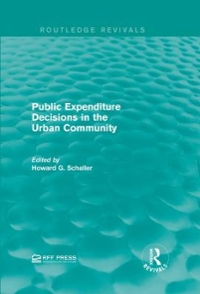Question
1) Watch Video: Inside the Euro (2:48), Video: Europe at the Brink: a WSJ Documentary (23:18), and Video: You're the Problem, Euro (1:21) to gain
1) Watch Video: Inside the Euro (2:48), Video: Europe at the Brink: a WSJ Documentary (23:18), and Video: You're the Problem, Euro (1:21) to gain a better understanding of the various aspects of the euro and the euro crisis. The critical documentary analysis in the second video and the short critique in the third provides an excellent perspective of the EU, the EMU, and their existential crisis. Please, copy the video's name and paste it into the search area!
Then, explain preferably in a few paragraphs why you would agree or disagree with some of the analyses/comments/points in each of the three videos
2) Consider the following questions about the U.S. / Euro exchange rate and the relationship between the economies of the United States and the European Union. Whenever you need external research, please use the websites of the St Louis Fed (FRED), the websites of the IMF, the Eurostat, the European Commission, the WTO, the CIA Factbook, or other educational, government, and/or academic sources.
Help me to find the correct answers using the websites above, and let me know how you find them
1)The U.S./Euro Exchange Rate
- Go to the FRED economic databasehttps://fred.stlouisfed.org/
1. Search for "U.S. / Euro Foreign Exchange Rate" to get the graphical representation of the pair in a historical perspective. Choose the option "Max" for the time to ensure you have the rates between 1999 and the present. Copy the graph and paste it here.
2. Choose at least two periods of significant changein the value of the $/ exchange rate, edit the graph to include those periods only, and paste here a copy of the edited graph.
3. State if the Euro appreciated or depreciated during the chosen periods. Discuss if this suggests an increased demand to hold the Euro or a decreased demand to hold the Euro.
4. What political, economic, and/or other event(s) can explain the notable change in your pair of exchange rates during the period chosen above?
2)As the currency of the European Monetary Union (EMU), the Euro is managed by the European Central Bank (ECB) which administers monetary policy for the EMUs (or the Eurozone's) 19 member states.Explain briefly:
1. What are some of the reasons for which the Euro was set to and continues to operate under a freely floating exchange rate regime?
2. Would it be a good idea to switch to some form of a fixed exchange rate regime?
3)Discuss the following questions:
1. It is often said and argued that the Euro is in an existential crisis and so is the EMU.
2. Identify some of the reasons for such analyses.
3. How does the theory of the Optimum Currency Areas apply to the performance of the Euro as a common currency?
4. Do you think there could be a bright future for the Euro? Why or why not?
5. What was the current account balance of the EMU in 2022?
6. How does the 2022 current account balance compare to the current account balance of the EMU during the two periods when the Euro appreciated/depreciated (the periods you chose above, in Q.1)?
7. Which members of the EMU can be identified as problematic and why?
You can use Eurostat data to answer b.https://ec.europa.eu/eurostat/databrowser/view/tipsbp20/default/table?lang=en
8. How big a player is the EMU in world markets, politically and economically?
9. Compare its population, GDP, GDP per capita, trade figures, trade-to-GDP, trade balance, etc. to those of the US.
Thanks
10. Thinking again in the context of the Optimum Currency Area and related policies, how is the U.S. different than the EMU?
Step by Step Solution
There are 3 Steps involved in it
Step: 1

Get Instant Access to Expert-Tailored Solutions
See step-by-step solutions with expert insights and AI powered tools for academic success
Step: 2

Step: 3

Ace Your Homework with AI
Get the answers you need in no time with our AI-driven, step-by-step assistance
Get Started


